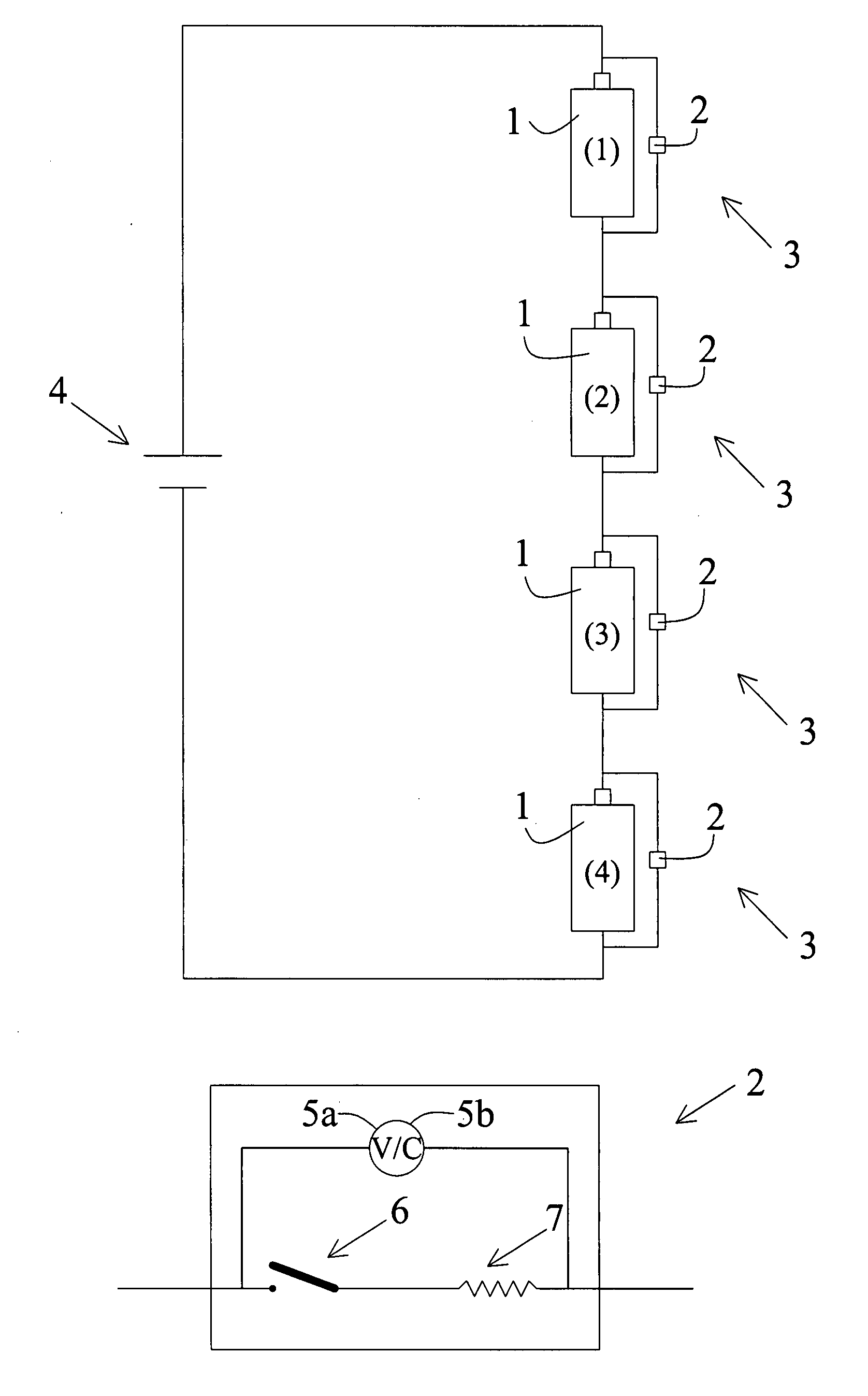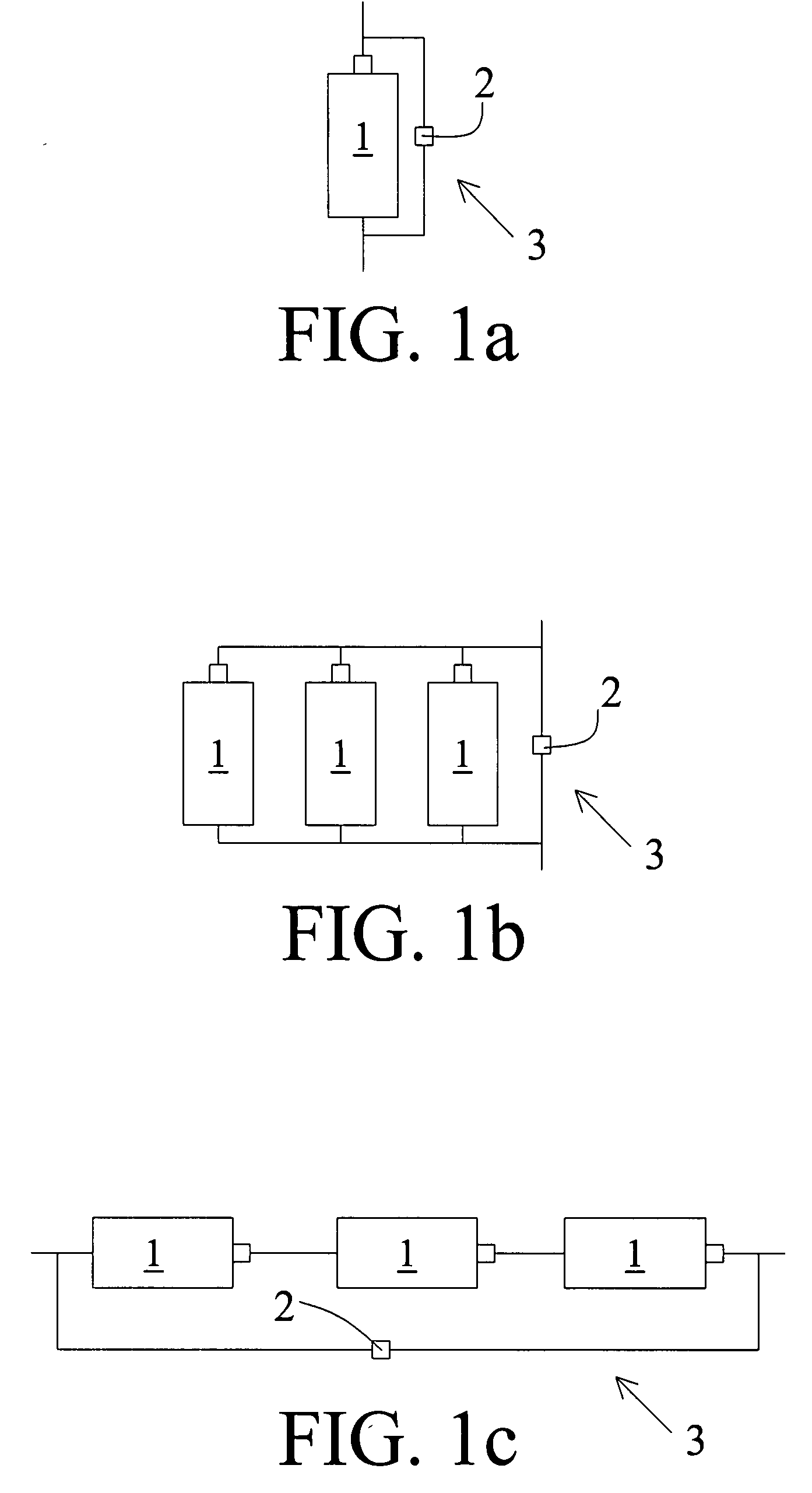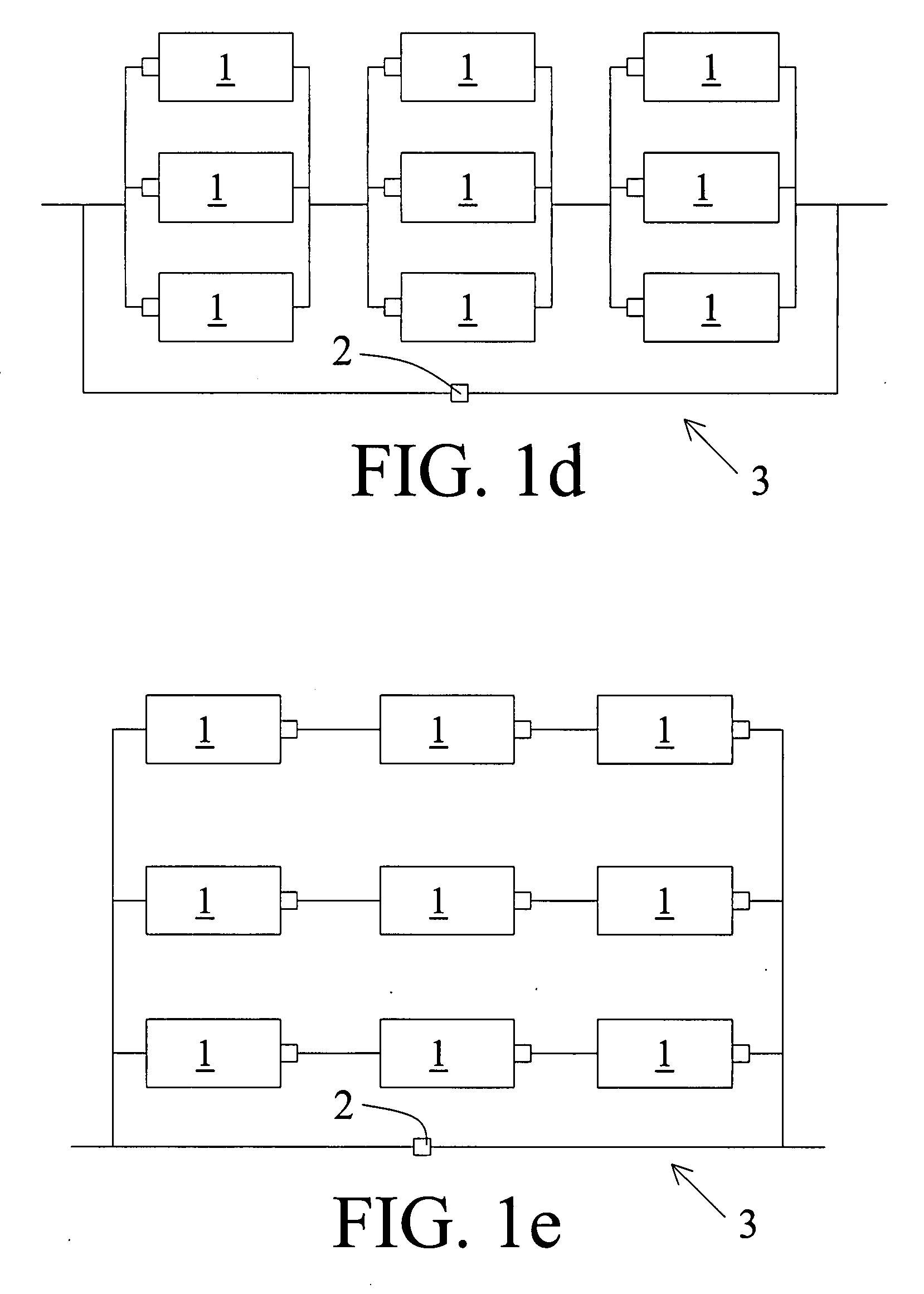Rechargeable battery assembly and power system using same
a rechargeable battery and power system technology, applied in the field of rechargeable batteries, can solve the problems of degrading the performance of the entire battery set, and achieve the effect of simple devi
- Summary
- Abstract
- Description
- Claims
- Application Information
AI Technical Summary
Benefits of technology
Problems solved by technology
Method used
Image
Examples
example 1
Theoretical Demonstration of how Cell Equalization can be Achieved
Assumptions:
[0033]1. Four battery assemblies are connected in series as indicated in FIG. 2(a).[0034]2. Batteries (1), (3), (4) have internal resistance of 5 mOhm, battery (2) has an internal resistance of 10 mOhm.[0035]3. Batteries (1), (3), (4) have open circuit voltage of 3.3V, battery (2) has an open circuit voltage of 3.6V.[0036]4. For each battery assembly, a resistor of 1.0 Ohm is connected parallel to the battery.[0037]5. A power supply of 15V is applied to the four battery assemblies connected in series.
case 1 (
Calculation Case 1 (when Paralleled Resistors are all Open):
During charging of the four battery assemblies, the voltage of each battery can be represented as:[0038]Battery (1): V1=Vo1+I1R1, V1 is the voltage of the battery (1) during charging, Vo1 is the open circuit voltage of battery (1), I1 is the current passing through battery (1) and R1 is the internal resistance of the battery (1).[0039]Battery (2): V2=Vo2+I2R2,[0040]Battery (3): V3=Vo3+I3R3,[0041]Battery (4): V4=Vo4+I4R4,
Since no other resistors are connected, I1=I2=I3=I4=I
15=(V1+V2+V3+V4)=(Vo1+Vo2+Vo3+Vo4)+I(R1+R2+R3+R4)
15−(Vo1+Vo2+Vo3+Vo4)=I(R1+R2+R3+R4)
15−3.3−3.6−3.3−3.3=I(0.005+0.01+0.005+0.005)
I=60 Amp—The current that passes through each battery
case 2
Calculation Case 2, (when the Paralleled Resistor Circuit is Closed for Battery (2)):
Assume I′ is the current passing through the resistor and R′ is the resistance of the resistor.
Then,
[0042]
V2=I′R′, I′=V2 / R′
V2=Vo2+I2R2,
Considering the current balance: (I′+I2)=I1=I3=I4=I
So,
[0043]
V2=Vo2+(I−I′)R2=Vo2+(I−V2 / R′)R2
Rearrange, then we get
V2=(Vo2+IR2) / (1+R2 / R′)
Thus,
15=(V1+V2+V3+V4)=(Vo1+Vo3+Vo4)+I(R1+R3+R4)+(Vo2+IR2) / (1+R2 / R′)
So,
I=61.672(A),
V2=(Vo2+IR2) / (1+R2 / R′)=4.175(V),
I′=V2 / R′=4.175(A),
I2=I−I′=57.497(A)
If we substitute a resistor of 10 Ohm, then
I=60.168(A),
V2=Vo2+(I−V2 / R′)R2=4.1975(V),
I′=V2 / R′=0.4198(A),
I2=I−I′=59.748(A)
Conclusions from the Calculations:[0044]1. With regards to battery assembly of FIG. 2(a), when the switch of the resistor in the parallel circuit is closed, current flows through the resistor, and the charging current for battery (2) is decreased.[0045]2. While the switch of the paralleled resistor circuit is closed for the battery assembly of FIG. 2(a), the charging cu...
PUM
 Login to View More
Login to View More Abstract
Description
Claims
Application Information
 Login to View More
Login to View More - R&D
- Intellectual Property
- Life Sciences
- Materials
- Tech Scout
- Unparalleled Data Quality
- Higher Quality Content
- 60% Fewer Hallucinations
Browse by: Latest US Patents, China's latest patents, Technical Efficacy Thesaurus, Application Domain, Technology Topic, Popular Technical Reports.
© 2025 PatSnap. All rights reserved.Legal|Privacy policy|Modern Slavery Act Transparency Statement|Sitemap|About US| Contact US: help@patsnap.com



